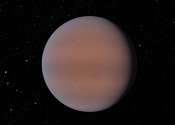Hubble observations used to answer key exoplanet questions
Archival observations of 25 hot Jupiters by the NASA/ESA Hubble Space Telescope have been analyzed by an international team of astronomers, enabling them to answer five open questions important to our understanding of exoplanet ...









